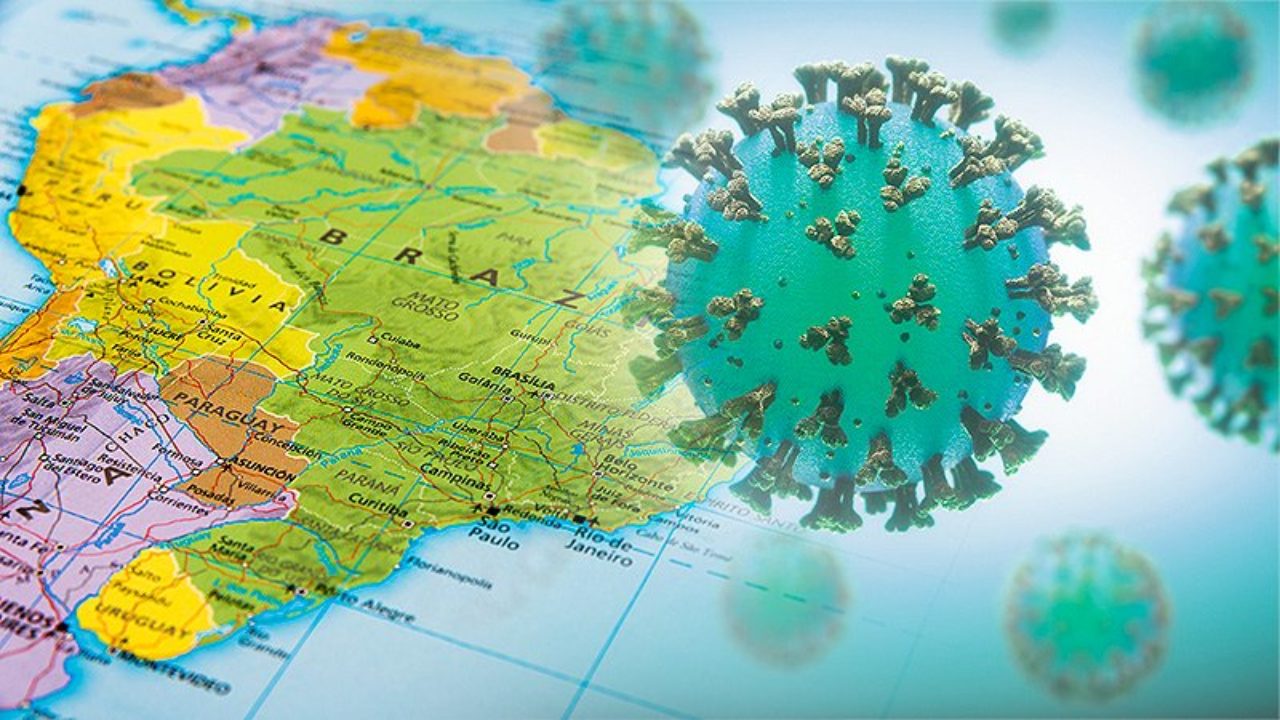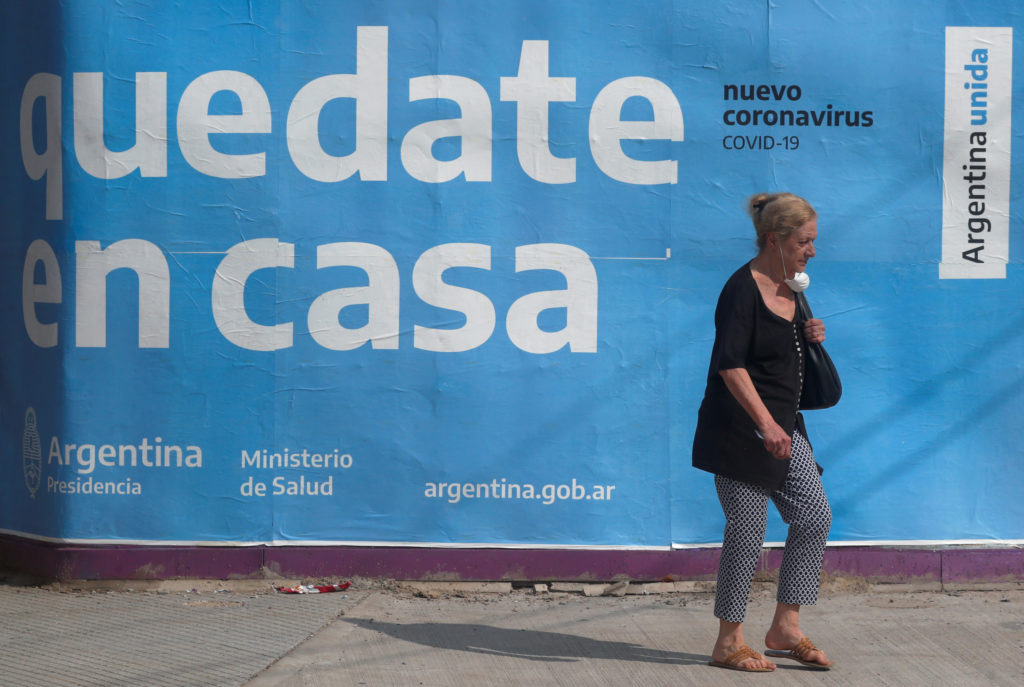RIO DE JANEIRO, BRAZIL – The coronavirus pandemic is spreading throughout Latin America. The region accounts for 51.4 percent of global infections, with 657,000 confirmed cases. Experts caution that the curve has escalated and that the peak is approaching.
The growing trend has sounded the alarm of the World Health Organization (WHO), which on Friday declared that the region, and particularly South America, “is the new epicenter of the disease”.

Attention is focused on Brazil, where the new positives passed the 20,000-mark on Friday and 16,000 on Saturday. With 347,000 cases and over 22,000 deaths, the Latin American giant ranks second on the infection podium, behind the United States and ahead of Russia.
The spread of the virus in Brazil is concurrent with the political crisis. President Jair Bolsonaro is at war with the governors who enforce confinement in their states. The far-right leader sees, lurking behind the quarantine, an evil hand willing to ruin the Brazilian economy and, with it, his government. Differences in strategy have fuelled an explosive cocktail.
The country totals 22,013 deaths from Covid-19, according to the Ministry of Health’s latest balance. Brazil is also one of the countries testing its population the least, which makes underreporting higher than that of nations like the USA. A projection, based on a method used by British doctors and epidemiologists, suggests that the actual number of cases in Brazil could be around 3.7 million.
Moreover, there are thousands of deaths possibly caused by Covid-19 that will never enter the statistics, and would raise the number of current deaths by up to 50 percent. Since the start of the pandemic, Brazil has recorded another 11,730 deaths from severe acute respiratory syndrome (SARS), a condition caused by Covid-19, but also by other diseases. The Ministry of Health will never know how many of these deaths were caused by the novel coronavirus. The Government concedes that this is either because patients were inadequately screened or because samples were collected incorrectly.
“Since there is no other relevant epidemic in the country, a large proportion of these more than 11,000 deaths are due to Covid,” explains epidemiologist Antônio Silva Lima Neto. A study by the Institute for Health Metrics and Evaluation (IHME) at the University of Washington, USA, projects that the country could reach the 88,000-death mark by early August, although it explains that the method provides a wide error margin in the projection: in the most optimistic scenario, there will be 30,000 deaths by August 4th, while the pessimistic scenario projects over 193,000. The analytical method combines statistics with health care structure data.
Although the government pledged to increase the number of available tests to 17 million by the end of the month, it distributed fewer than half that number. Authorities are not even aware of the total number of tests conducted, because they do not have data from the private health network to include in the database it compiles; only data from public laboratories are utilized.
Argentina controls deaths, but fears for economy
The situation for Brazil’s neighbors is different. On Saturday, Argentina extended mandatory confinement, in force since March 20th, for a further two weeks. It has kept the virus under control, with 11,353 cases detected and 445 dead, but now it fears it cannot manage the economical cost.

Business activity dropped 11.5 percent in March in the year-on-year comparison, with only ten days of quarantine. April will show the figures of an unprecedented crisis. With its foreign debt in technical default, Alberto Fernández’s government is trying to quickly renegotiate with creditors to avoid a worse situation.
Chile, on the other hand, has a robust economy, but it has accumulated health issues. Positive cases exceed 62,000, and ICU beds are now showing evidence of saturation. Social protests, paralyzed by quarantine, have returned with demands for work and food in the capital’s most impoverished neighborhoods.
Official statistics place Venezuela as one of the countries with the fewest cases: 994 positive and ten deaths. But contagion has increased 40 percent over the past week, showing that the situation could quickly change.
Ecuador has recorded 5,082 deaths, while in Peru President Martín Vizcarra, for the fifth time, extended the curfew that was due to end on Sunday, an extreme measure that fails to halt the spread of the virus.
With 115,000 positive cases and 3,373 deaths, Peru is the second country in the region in terms of number of infected people.
Colombia, with 20,177 coronavirus records, added 23 deaths to the 673 it had by Friday, and 1,064 new positives, its largest daily record since the start of the pandemic. As with big cities like Buenos Aires, Santiago, and São Paulo, Bogotá is the most affected city in the country.
Mexico is experiencing the peak of the pandemic. On Saturday, 3,329 positive cases were reported, the highest daily figure following the announcement of the health emergency on March 30th. Since then, 7,179 deaths and almost 66,000 infections have been reported, despite the few tests conducted.
Mexican management of the crisis has prompted much criticism and grave journalistic accusations of erratic management and the suspicion that hundreds of cases are being concealed. A week ago, the authorities announced that they had managed to “flatten the curve”, and in recent days presented a plan to return to “new normality”.
But the country registers record deaths every day, and the pandemic is pummeling Mexico City, which totals nearly 1,600 deaths, as well as the metropolitan area surrounding the capital (1,200 deaths), and the states of Baja California, Tabasco, and Sinaloa.
After many days mocking the effects of the virus, President Andrés Manuel López Obrador proposed voluntary confinement in early April, which will run until June 1st, although the states and municipalities will be in charge of managing the toughness of the measure. The restrictions have completely paralyzed the country’s economic activity, shutting down locations such as Monterrey, Guadalajara, the El Bajío industrial area, tourism in Cancún, and the assembly plants that meet US demand. The economic consequences trace one of the region’s darkest prospects, with a 10 to 12 percent drop in GDP now being forecast.
While Latin American statistics are growing, the decrease in Europe continues, accounting for 23.5 percent of global cases. According to WHO, 12 percent of those infected are located in the Mediterranean region and 7 percent in Asia. In Africa, only 2.8 percent were recorded.
Source: El País

